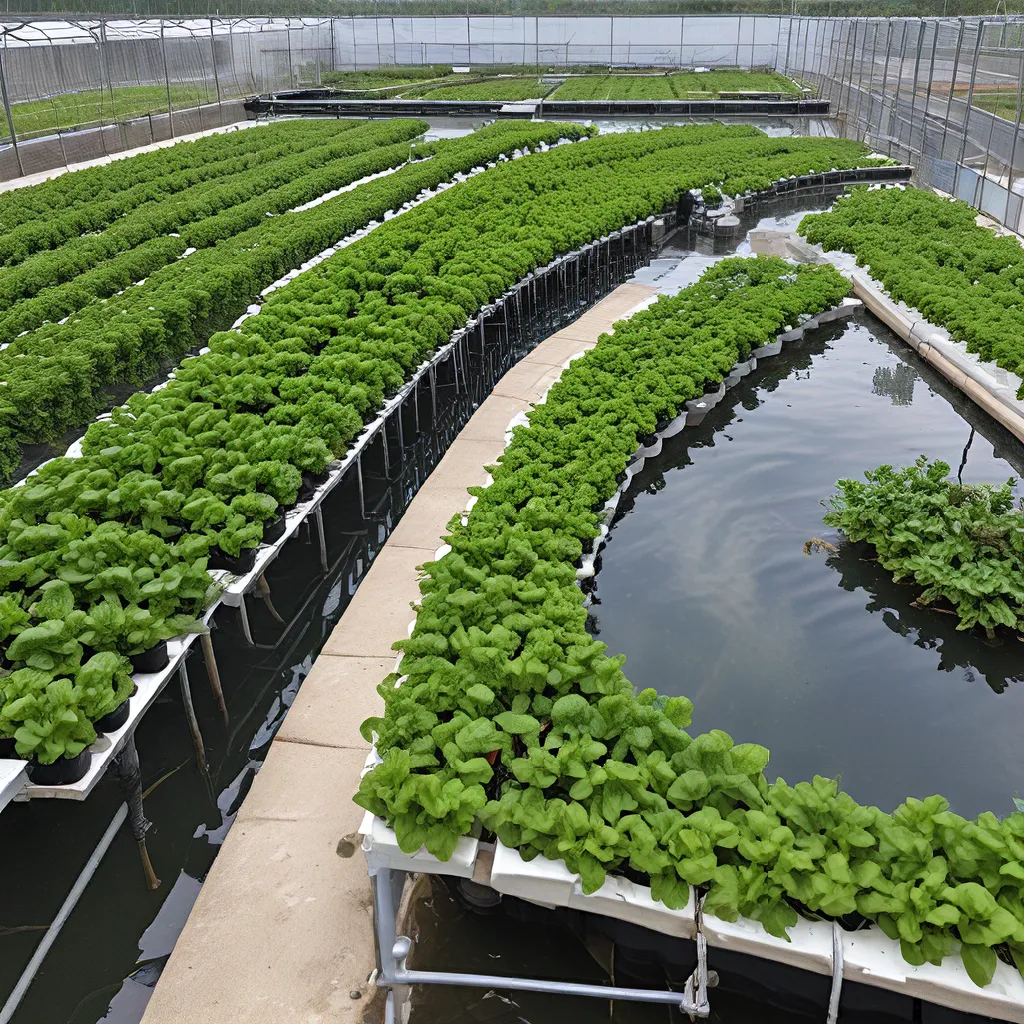
As I delve into the fascinating world of wastewater treatment, I can’t help but feel a palpable sense of excitement. The idea of seamlessly integrating hydroponics, a cutting-edge agricultural technique, with the age-old process of purifying water, is nothing short of captivating. It’s as if we’re on the cusp of unlocking a new frontier in sustainability, a realm where the once-disparate realms of waste management and crop cultivation converge in a harmonious dance.
But let’s take a step back and explore this concept in greater depth, shall we? The key lies in the symbiotic relationship between microalgae, bacteria, and the nutrient-rich wastewater that serves as their lifeblood. You see, these microscopic organisms possess a remarkable ability to not only thrive in wastewater but also to actively remove the pollutants that plague it. It’s a veritable feast for these tiny titans, and they’re more than happy to gobble up the excess nitrogen, phosphorus, and other undesirable compounds, transforming them into a valuable biomass in the process.
But the real magic happens when we harness this biomass and incorporate it into a hydroponic system. Imagine a lush, verdant garden flourishing atop a wastewater treatment plant, nourished by the very same effluent that’s been purified by the hardworking microalgae and bacteria. It’s a testament to the circular economy we’re striving to create, where waste becomes the foundation for new growth.
The Alchemy of Wastewater and Hydroponics
Now, I know what you might be thinking: “Wastewater and hydroponics? Isn’t that a bit… unconventional?” And you’d be right. Traditionally, hydroponics has relied on commercially available fertilizers to provide the necessary nutrients for plant growth. But what if I told you that the nutrient-rich byproduct of wastewater treatment could be an even better alternative?
Studies have shown that the effluent from a microalgae-bacteria consortium-based wastewater treatment system can serve as a superior nutrient source for hydroponic cultivation. Not only does it contain the essential macronutrients like nitrogen and phosphorus, but it also boasts a diverse array of micronutrients that can enhance plant health and growth. It’s a veritable feast for your leafy greens and juicy tomatoes!
But the benefits of this integrated approach go far beyond just the nutritional aspect. By using the treated wastewater as a hydroponic feed, we can reduce the demand for freshwater resources, which are becoming increasingly scarce in many parts of the world. It’s a sustainable solution that conserves precious water while repurposing waste streams for productive use.
Breaking Down the Science
Now, I know what you’re thinking – this all sounds great, but how exactly does it work? Well, let me break it down for you:
The core of this integrated system is a raceway reactor, a shallow, oval-shaped pond where the microalgae-bacteria consortium does its magic. These tiny powerhouses work in tandem to consume the pollutants in the wastewater, transforming them into a nutrient-rich biomass. The process is so efficient that over 60-95% of the nitrogen and 15-68% of the phosphorus can be removed and incorporated into the biomass.
But the real kicker is that this biomass can then be harvested and used as a nutrient source for hydroponic cultivation. The ultrafiltration membranes employed in the process allow for the concentration of the biomass to a high density of 9-10 g/L, making it ideal for use in hydroponic systems.
And the best part? This integrated approach avoids the energy-intensive steps of centrifugation and drying that are typically required in conventional biomass harvesting processes. It’s a win-win for both the environment and the bottom line.
Putting it into Practice
But enough with the technical details – let’s talk about the real-world applications of this integrated system. Imagine a wastewater treatment plant that doubles as a thriving hydroponic farm, where the effluent from the microalgae-bacteria reactor is channeled directly into hydroponic grow beds, nourishing a bountiful harvest of vegetables, herbs, and leafy greens.
This is no longer just a theoretical concept – researchers have already put this idea into practice, and the results are nothing short of remarkable. In a recent study, a natural microalgae-bacteria consortium was used to process urban wastewater in an 80 m2 raceway reactor, and the resulting biomass was then utilized as a nutrient source for hydroponic zucchini production.
The findings were truly impressive: the zucchini seedlings grown with the wastewater-derived nutrients showed significant improvements in root development and chlorophyll retention compared to those grown with water alone. It’s a testament to the power of nature-based solutions and the untapped potential of integrating wastewater treatment and hydroponic cultivation.
Towards a Sustainable Future
As I reflect on the incredible potential of this integrated approach, I can’t help but feel a deep sense of optimism about the future of sustainable wastewater management and food production. Imagine a world where every wastewater treatment facility is transformed into a thriving, self-sustaining ecosystem, where waste becomes the foundation for abundant and nutritious crop growth.
It’s a vision that challenges the traditional linear model of resource extraction, use, and disposal, and embraces the principles of a circular economy. By closing the loop between wastewater treatment and hydroponic cultivation, we can reduce our environmental footprint, conserve precious natural resources, and contribute to a more resilient and sustainable food system**.
Of course, the road to this future is not without its challenges. Ongoing research and innovation will be crucial to optimize the processes, overcome technical hurdles, and address any potential limitations. But if the past is any indication, I have no doubt that humanity’s ingenuity and determination will rise to the occasion.
So, my friends, let us embrace this exciting frontier of wastewater treatment and hydroponic cultivation. Let us dare to reimagine the possibilities and work towards a future where waste is transformed into abundance, and sustainability is the foundation of our thriving society. After all, the solutions to our most pressing environmental challenges are often right under our noses – we just need to have the courage to see them.